How to back up your SMS text messages on Android
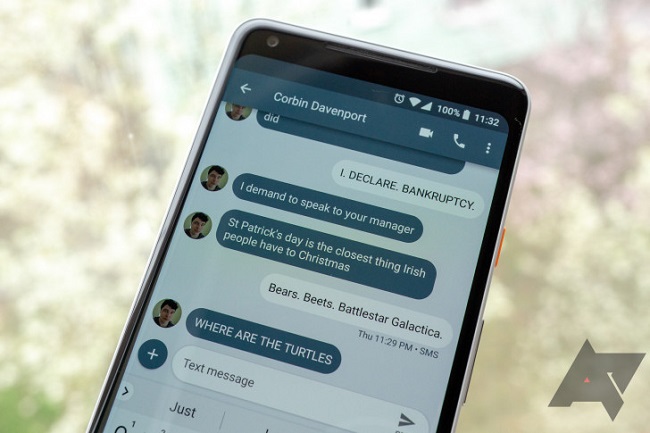
Much of the world has moved on from SMS, but it’s still one of the most popular methods of sending messages in the US. It’s an unfortunate requirement here for many, and it probably will be until RCS gets off the ground. And if you’re the data-hoarding type, then you might want to keep those SMS messages around for later reference — either in cold storage or an easily accessed format. But even bringing them with you from device to device isn’t actually that hard, and we’re glad to walk you through the different ways to do it.Of course, Google’s Pixels (and a handful of other Oreo-powered devices) include built-in SMS backup these days, as well as a tool during the setup process for migrating messages over to a new phone, so let’s cover that first.
Android’s built-in SMS Backup
As of Android 8.1, you can now restore backed-up data (including SMS messages) after the initial setup. Unfortunately, it’s not a manual process like the other items on this list. It’s only available if the “Finish setting up” screen is shown at the top of your settings panel. Tap that “Finish Setup” button, and it’ll perform the same restoration maneuver it typically would on initial setup, which can include restoring previously backed-up SMS messages from your devices.

Pixels have automatic SMS backup.

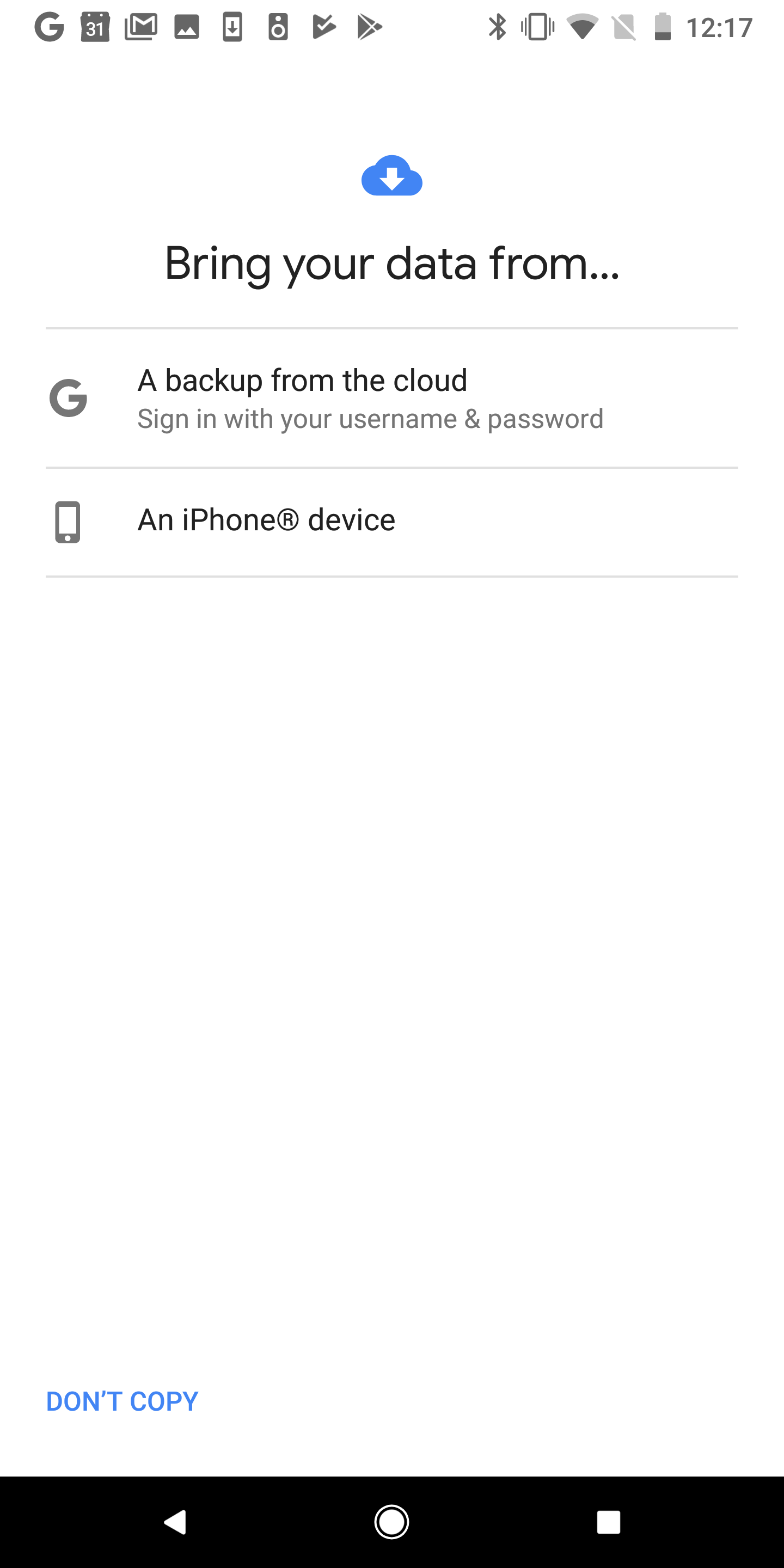

The data comes courtesy of Android’s automatic backups, and they’re stored on Google Drive. You can view them (but not their contents) via the Android app, and the backup process as a whole can be manually triggered in Settings (usually Settings -> System -> Backup, but you can also just search for “Backup.”) but SMS backups created in this way can’t be easily copied off or moved elsewhere, as with dedicated apps, and they don’t include MMS media.
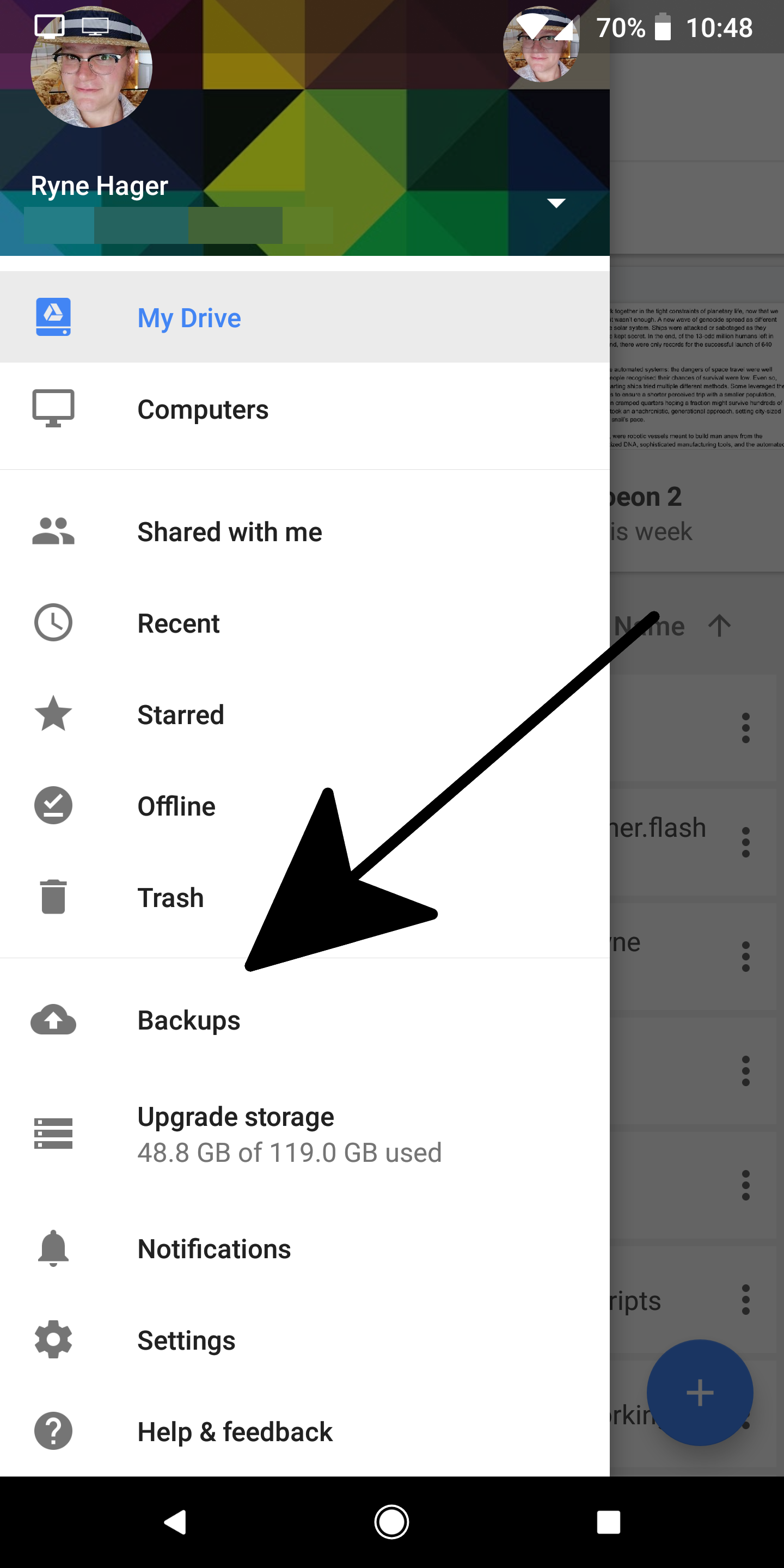

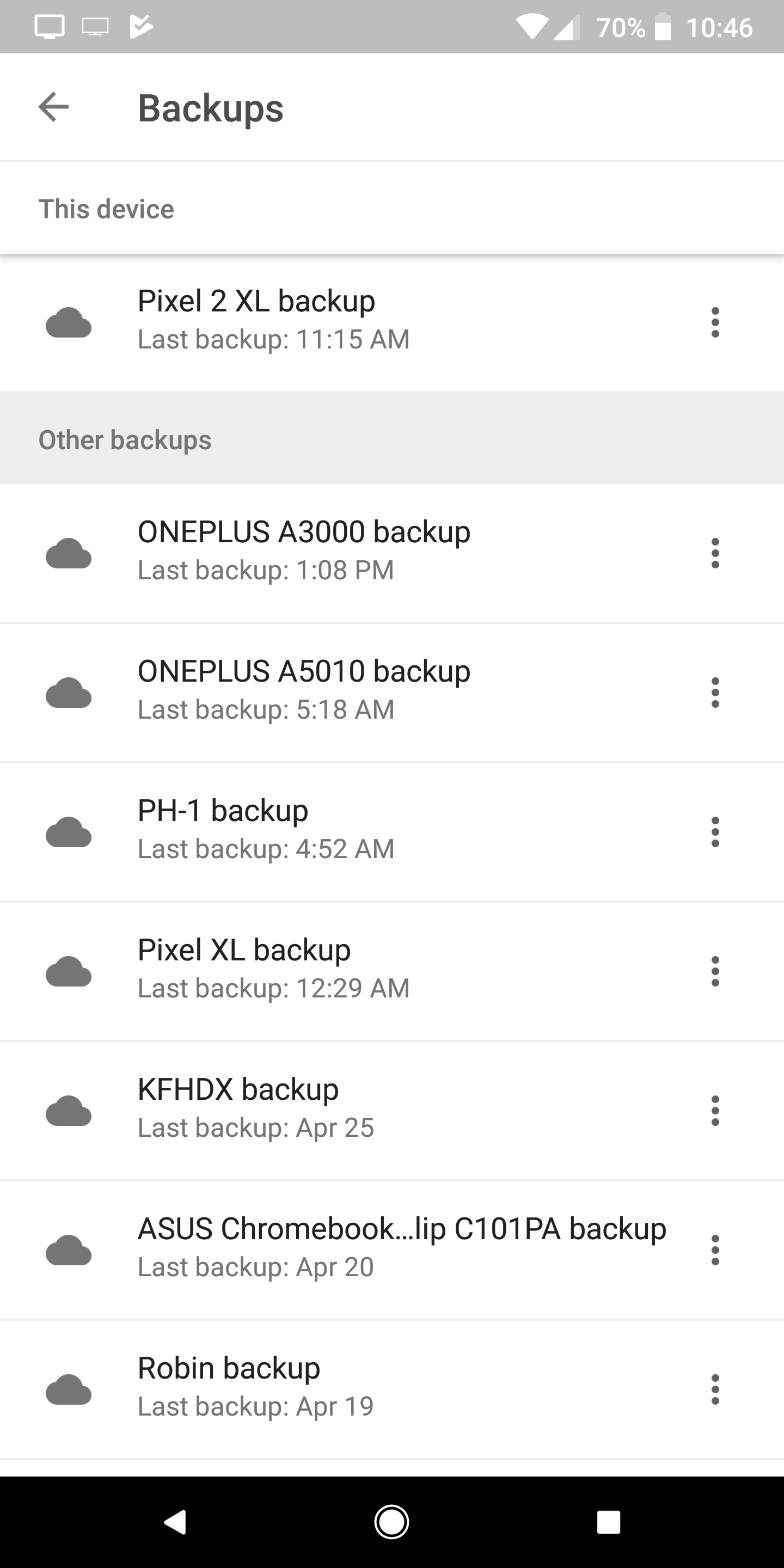
Viewing the list of automatic backups in Google Drive.
The built-in system is useful and automatic, but without a way to manually trigger the restoration process or view the backed-up contents, it’s of limited utility. For instance, you can’t read those messages off-device, and you can’t save them long-term — the backups eventually expire in Google Drive. In such cases, this automatic system might not fit your needs, but there are alternatives.There are a lot of individual apps for backing up and restoring your SMS messages, but for the purposes of this discussion, we’ll refer to two well-known and high-quality free apps we’ve covered in the past: SMS Backup+ and SMS Backup & Restore. They both let you back up and pull down your messages with a bit more control than the stock system, but each is suited to a slightly different use case.
SMS Backup+
Google has broken how SMS Backup+ can sign in and integrate with Gmail by default as a result of changes to API settings. You can still use the app, but it now requires a different and more difficult setup process, documented below.

SMS label in Gmail
If you’re mostly interested in keeping your messages around somewhere (without necessarily having local access to them), then SMS Backup+ is probably your best choice. The app is open source and allows you to automatically back up your SMS, MMS, and call history to your Gmail account, presenting your messages there in a convenient “SMS” label, laid out in the same format as email conversations, accessible anywhere via phone, computer, or tablet.

SMS messages in conversation view on Gmail
The app is free with in-app purchases, and although there was a couple year gap in updates, it still remained functional during that time (if somewhat dated looking). Google also killed the easy Gmail API access/login for the app with its recent changes, so the setup is a bit more tedious now.

Enabling IMAP in Gmail.
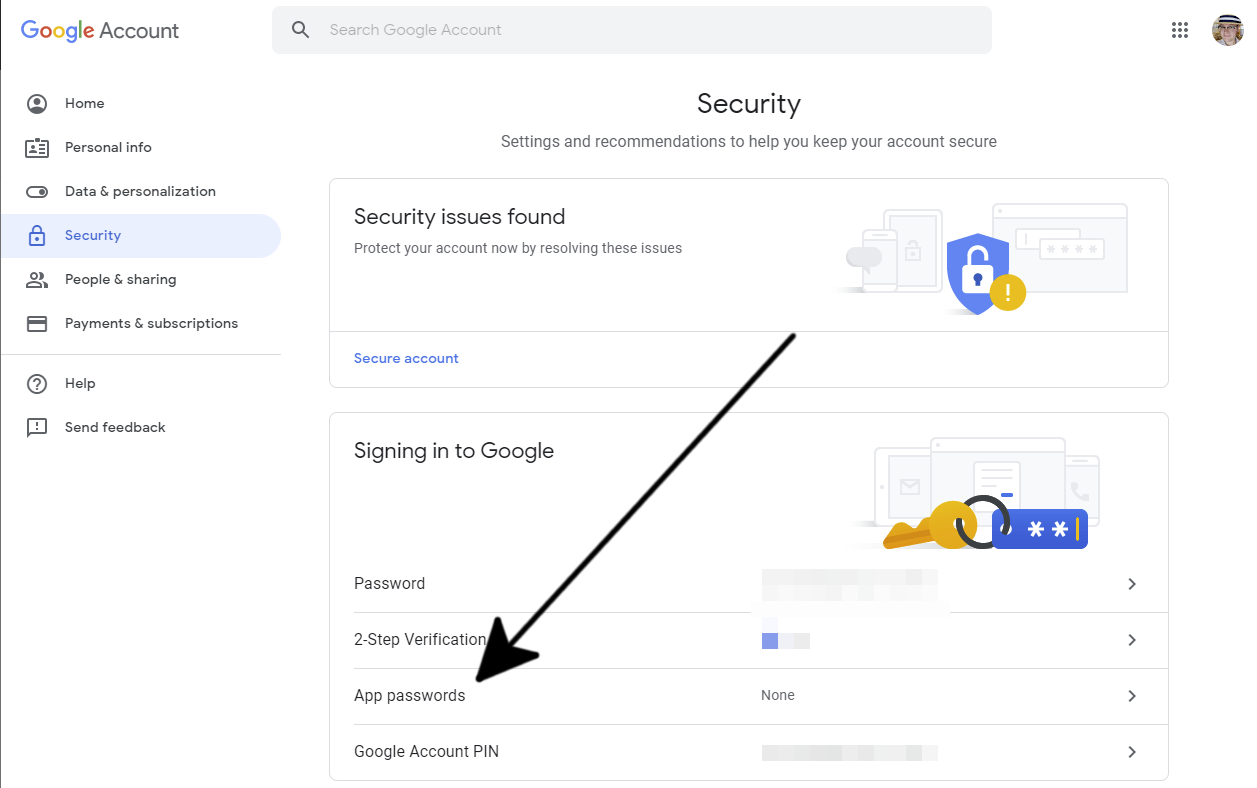
First, some prep: You’ll need to flip Gmail over to allow IMAP access. The option is accessible from the Settings cog icon on the Gmail website in the corner -> Settings -> Forwarding and POP/IMAP. There, select “Enable IMAP” and click “Save Changes” at the bottom of the screen.
App passwords setting in your Google account.
Now we’re going to make an app password for SMS Backup+. Go to security.google.com and select “App passwords.” You’ll be prompted to sign in again.
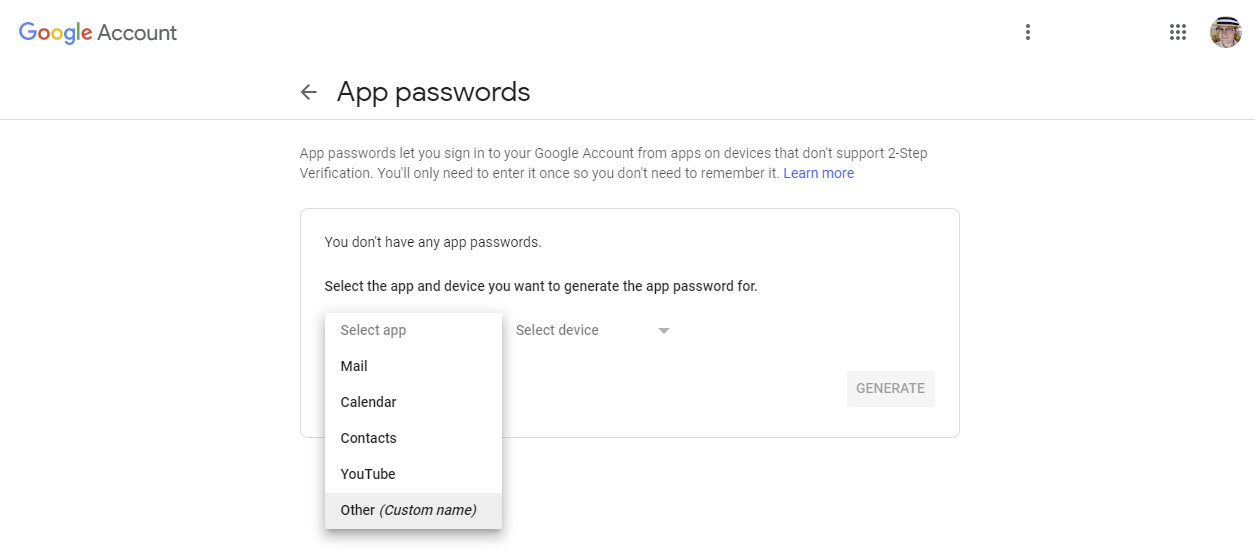
Creating an app password with a custom name (above and below).
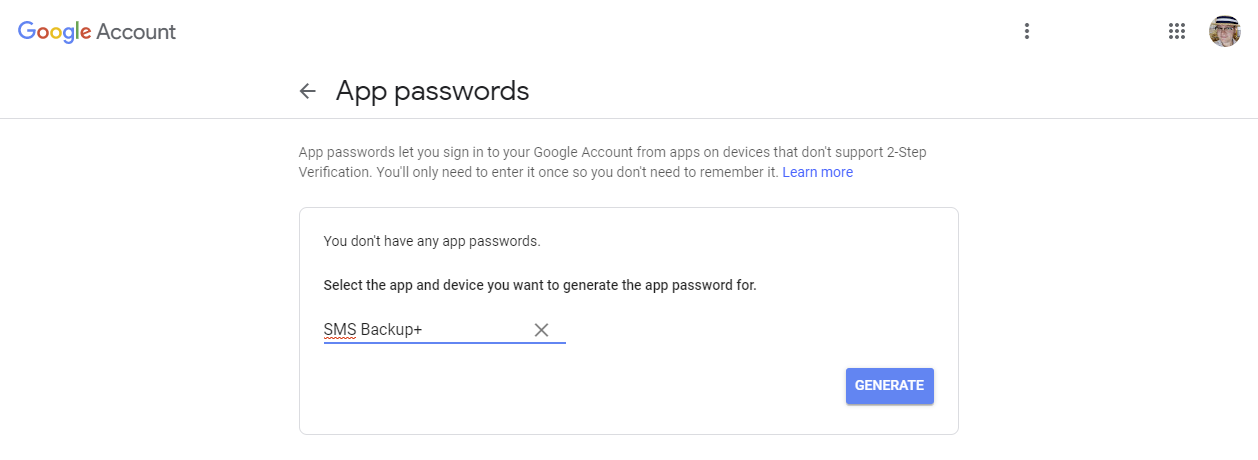
On the next screen, there’s a pair of drop-down lists for categorizing the app password you’re about to make. Select “Other” from the left-most drop-down list and give this password a descriptive name like “SMS Backup+” so you know what it’s for if you see it later.
Click Generate.

The generated app password.
Google will give you a randomly generated sixteen character password. Make a note of it, but please treat this as carefully as your normal password. Don’t write it on a post-it and stick it on your monitor or copy it to Google Drive/Keep. It’s a password that grants access to your Google account without the security of two-factor authentication, treat it as such.

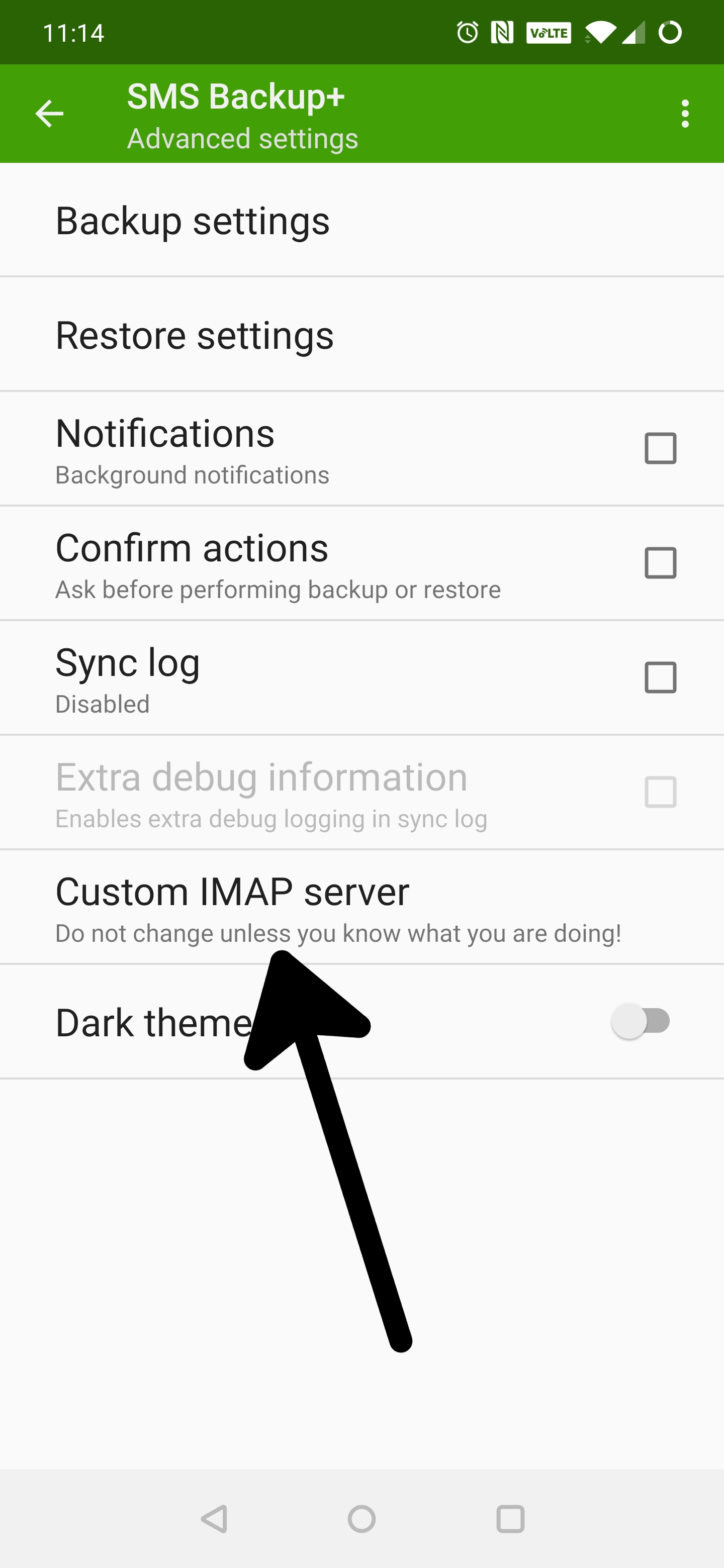
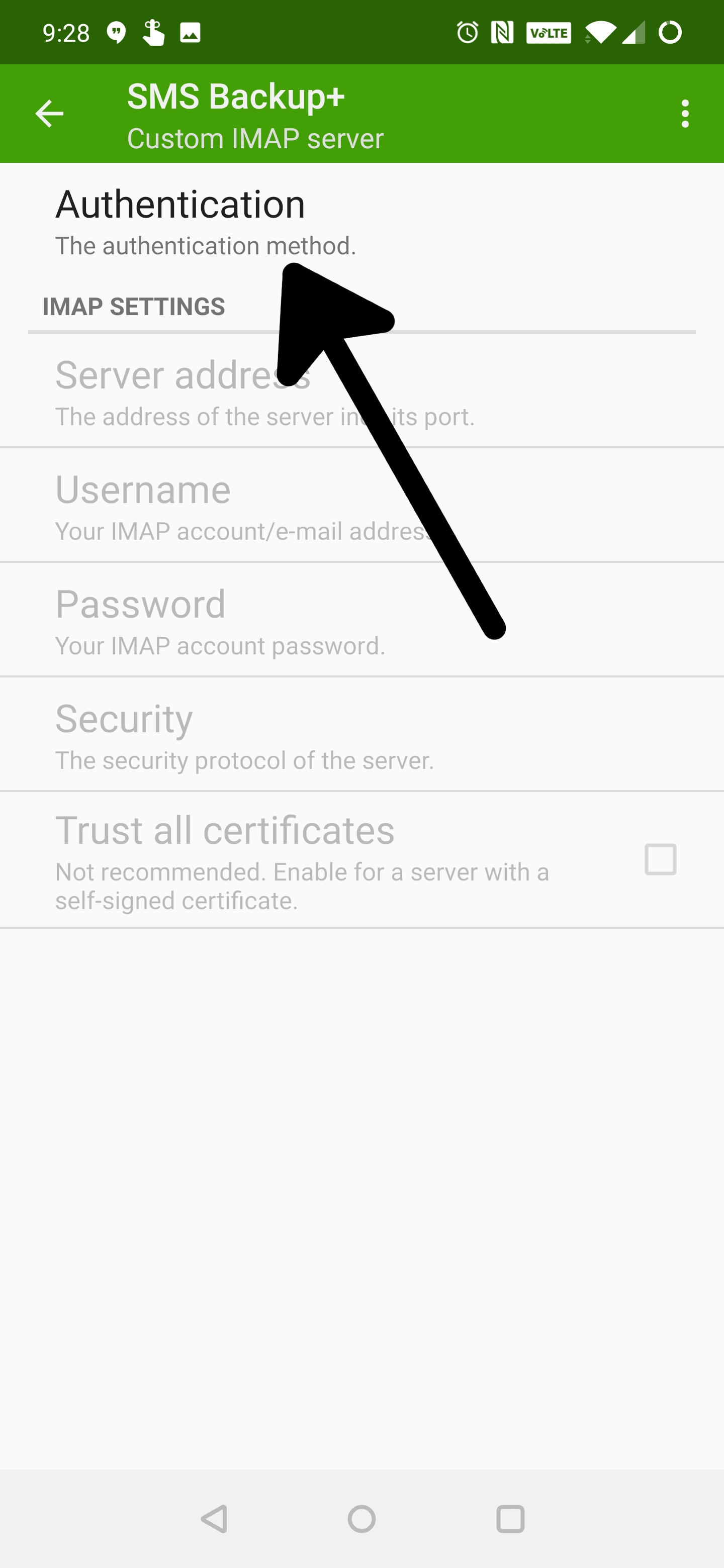
Configuring SMS Backup+ for IMAP.
Once you have your password for SMS Backup+, install the app, fire it up, and jump past the changelog and permission screens (granting their requests) to get to the main app. There, you can ignore the “Connect” switch, as that uses the old Gmail APIs, which are broken for the app. Instead, you’ll need to tap “Advanced settings,” and then “Custom IMAP server.”
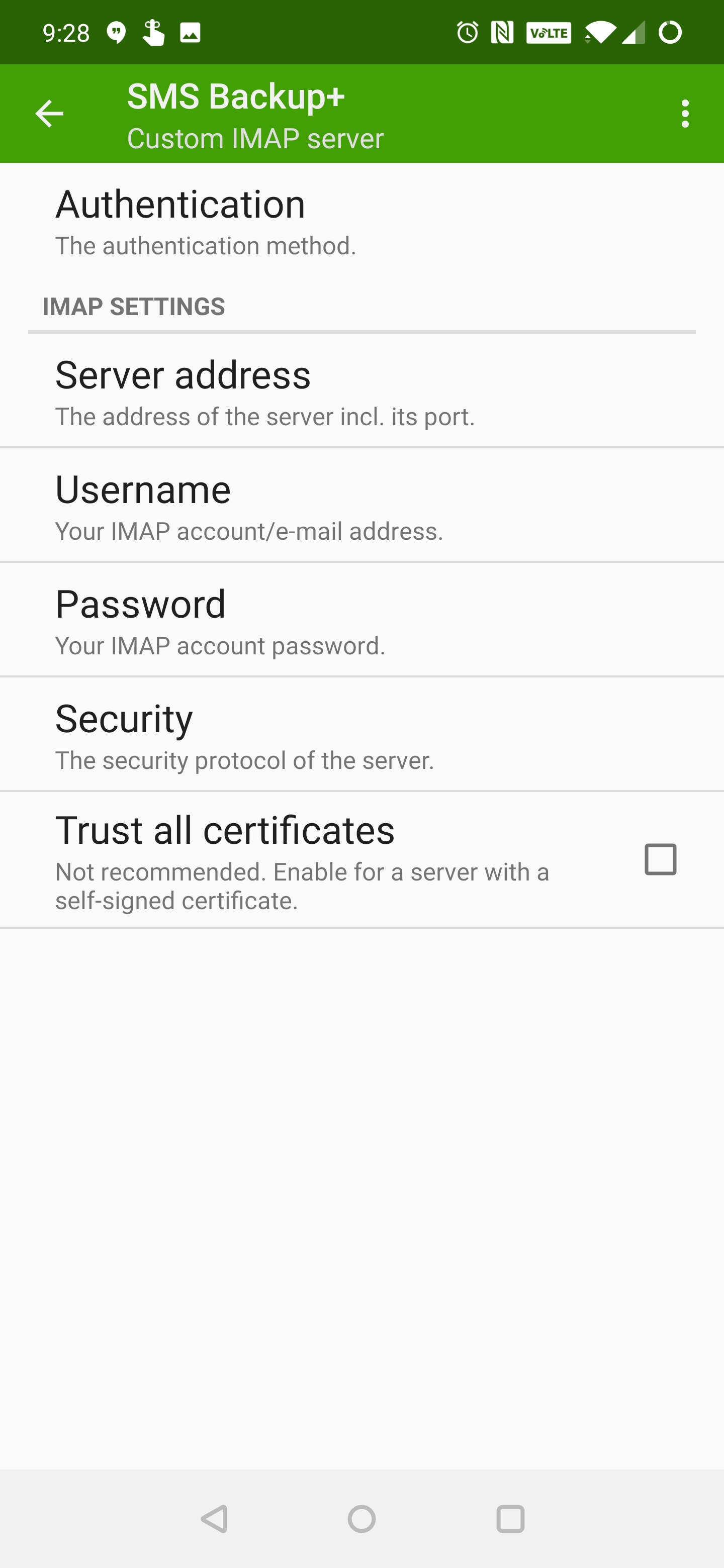
IMAP settings in SMS Backup+.
This takes you to the IMAP setup process. From here, tap “Authentication,” and select “Plain text,” which will allow you to enter your own information. Most of the default settings should be okay, so there are only a few changes to make, but because the settings can sometimes be wrong, we’ll make sure they’re all configured before we’re done.
Tap “Server address” and set it to imap.gmail.com:993 and press “OK” so that the app knows where to log in — though the default setting should work. Then tap “Username” and enter your Gmail address (i.e., someguy@gmail.com). Now tap “Password” and enter that app password we generated before, with no spaces. Tap “OK” when you are done. Now double-check that the setting in the Security is set to “TLS.” It should be by default, but it’s best to be sure.

Backing up messages in SMS Backup+.
Once you’re done with all that, back out to the app’s main screen and backups should be working, though the “Connect” section for linking to a Gmail account will now be grayed out, since we’re using the IMAP workaround. Tapping the “Backup” button now should trigger a backup successfully.Should you run into any issues, double-check that you followed the steps above precisely, that IMAP is enabled in Gmail, that security for login in SMS Backup+ is set to TLS, and that the server address (imap.gmail.com:993) is configured.You can set the app to automatically back up messages with a configurable schedule via the “Auto backup” checkbox and associated settings. I’ve always found the default settings, which back up incoming messages every minute and outgoing messages every two hours, to be fine. Data used by the app is pretty minimal, but if you are concerned, you can set it to only make backups on Wi-Fi. It’s also able to broadcast an intent at the time of backup for third-party app integration.The backup process for SMS Backup+ is pretty slow, especially over IMAP, but since messages really only need to be backed up once — and since that can be done as they come in without you even noticing — it’s not much of a problem. It is much more of a concern, however, if you plan on using the system to migrate between devices, as the restoration process is quite time-consuming.
In fact, if that’s your intention, there’s another app in this guide which might suit you a bit better.
SMS Backup & Restore
SMS Backup & Restore has changed hands a few times in recent history. It was bought by Carbonite and later sold to SyncTech. But none of that really matters, it’s just a good, free app for exporting SMS and MMS messages in a single file.On first launch, SMS Backup & Restore has a nice little walk through that explains which permissions it needs to request and why, at which point it asks for the whole bundle at once before dumping you on the main screen.
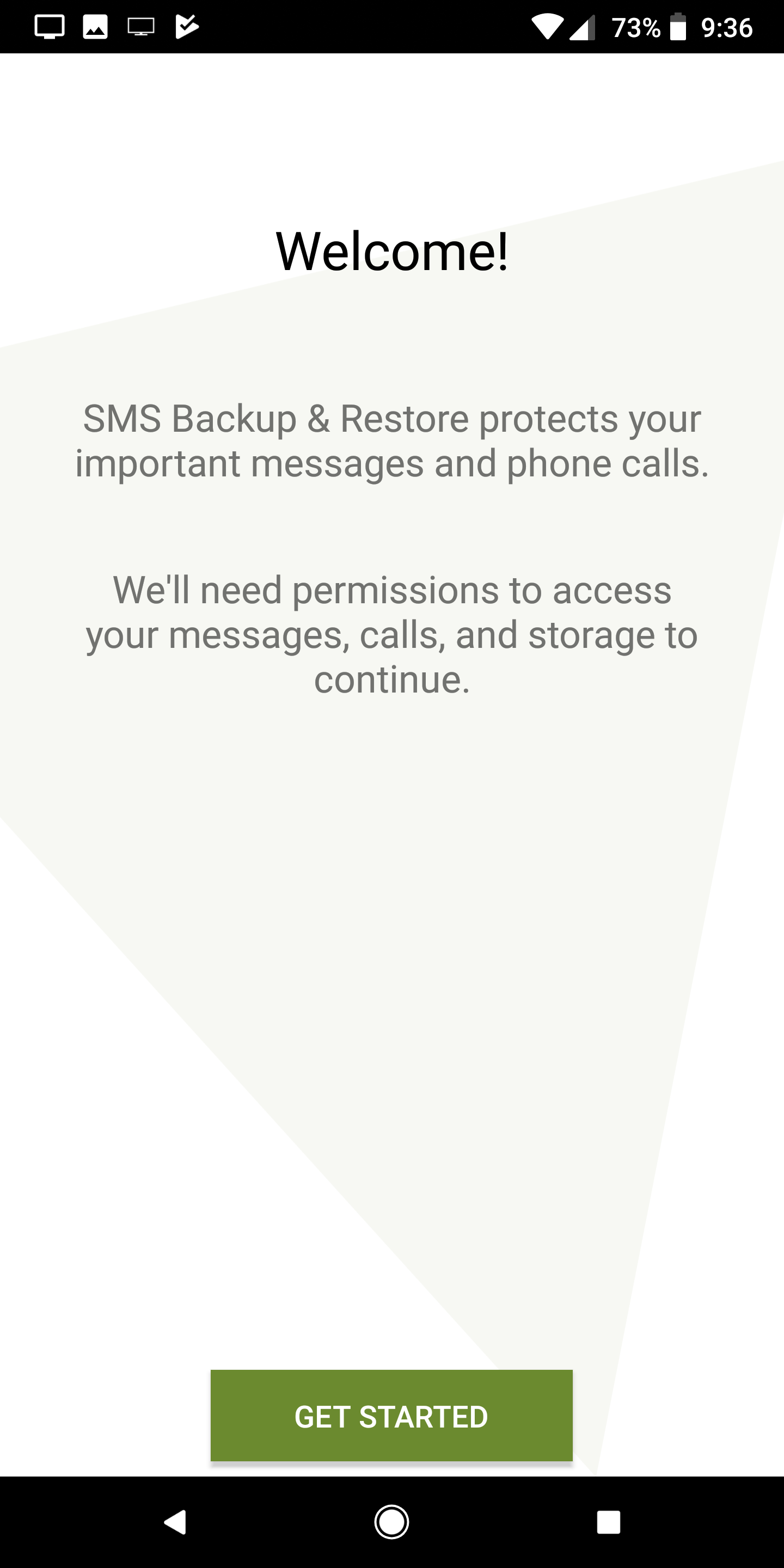

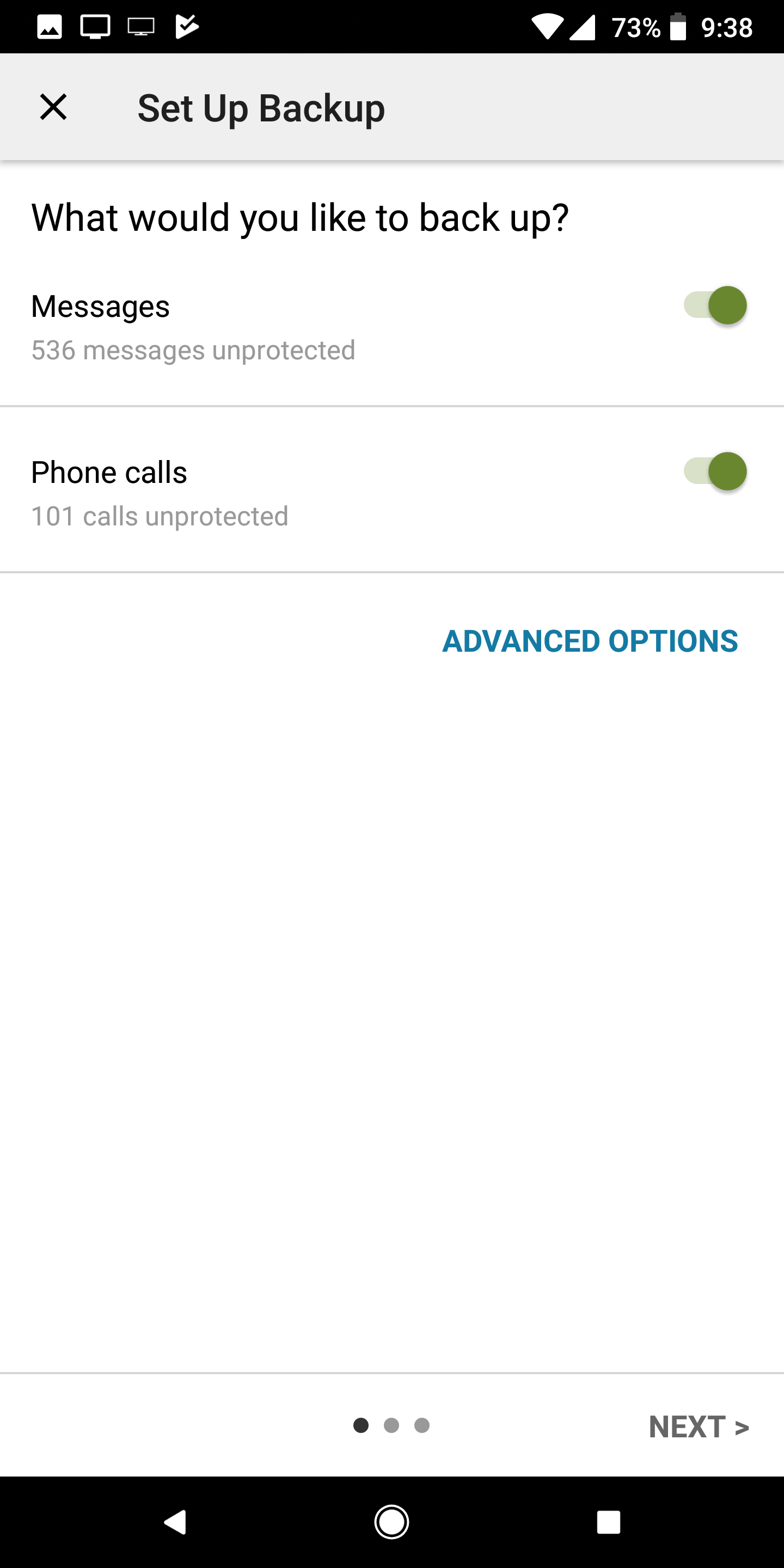
Backup setup process in SMS Backup & Restore
The manual backup process is simple. Just tap “Set Up A Backup” and follow the instructions. Be sure to go into the advanced menu and select media and emoji options if you’d like those to be included, or select individual conversations if you don’t want everything to be saved.It then asks where you’d like to store the backup, with integration options for Google Drive, Dropbox, and local storage. Select whatever works for you. For example, Google Drive is handy if you’re maintaining the backup as a static archive, while local storage might be useful if you’re flashing a new ROM, etc.
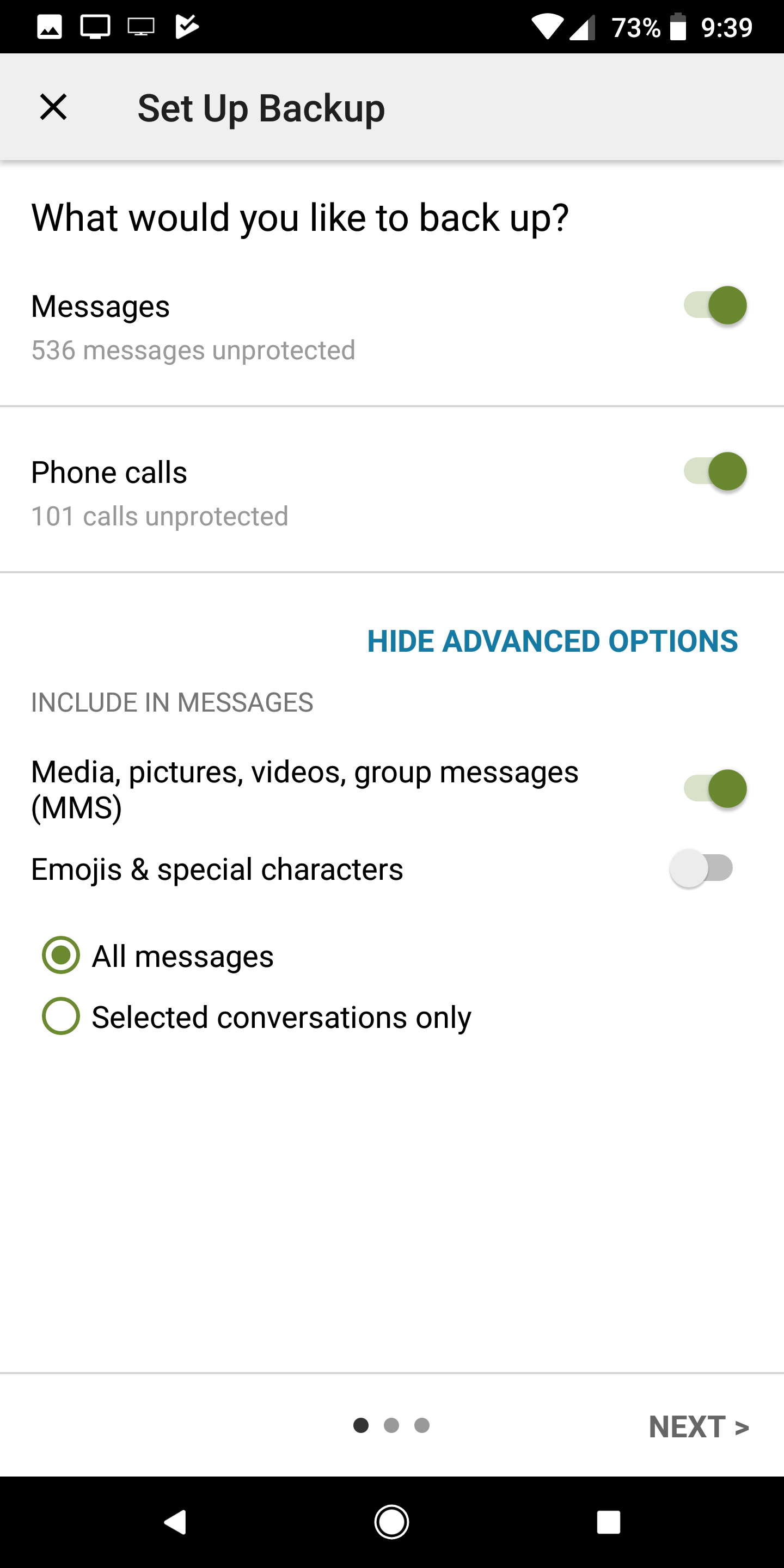

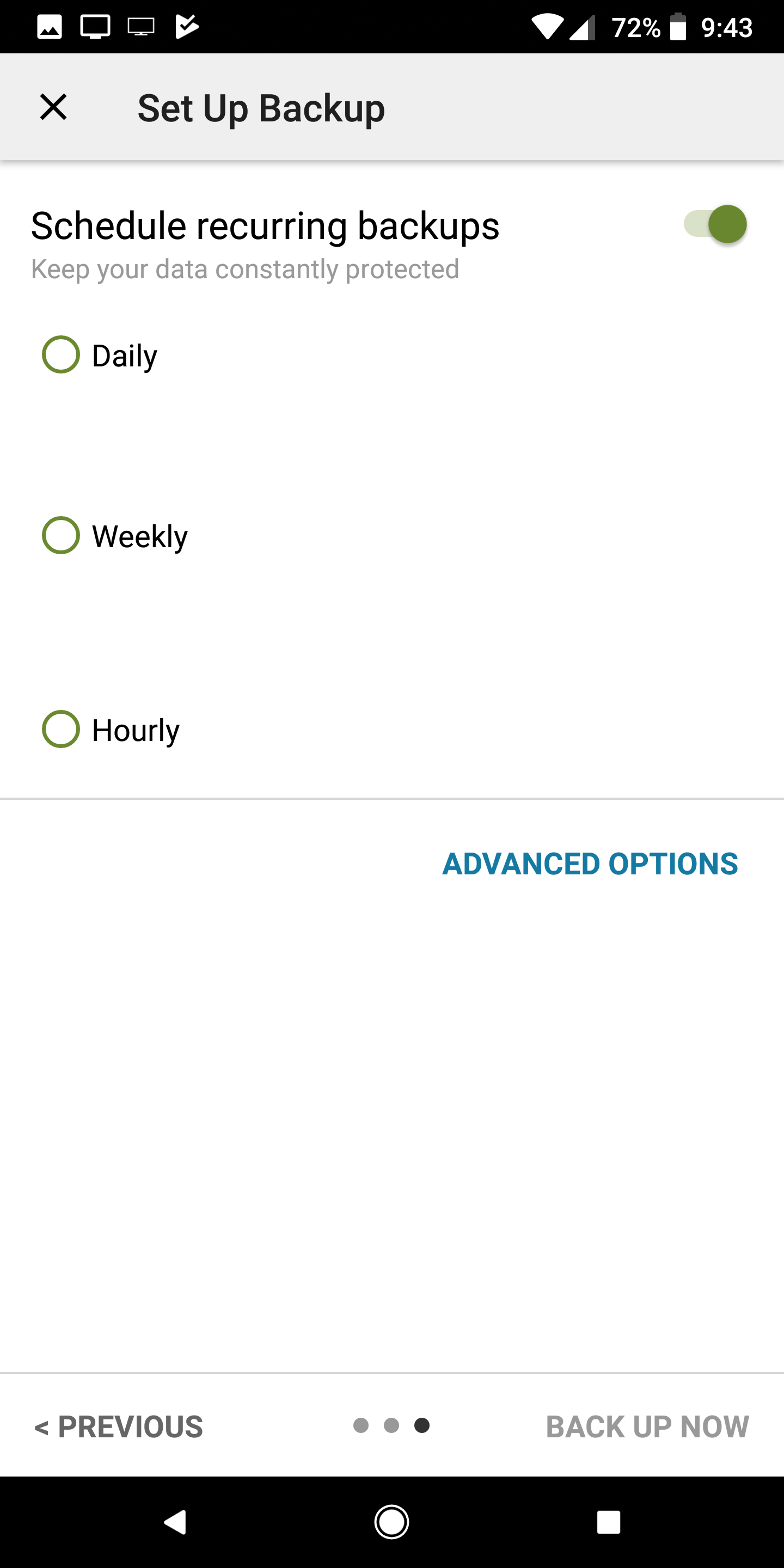
Backup setup process continued.
You can also set up scheduled backups, with old files being automatically removed. But without the advantage of deltas/incremental changes, there are some disadvantages. Those backup files can get pretty big if you have enough MMS or a few tens of thousands of SMS messages, and regular backups could burn through data.Honestly, I find the app more suited to one-time backups or migrations than regular schedules, especially compared to SMS Backup+, but the option is there if you need it.

Once you’ve got things set the way you want, tap “Back Up Now,” and you’re off. One huge advantage: Compared to SMS Backup+, it’s significantly faster.
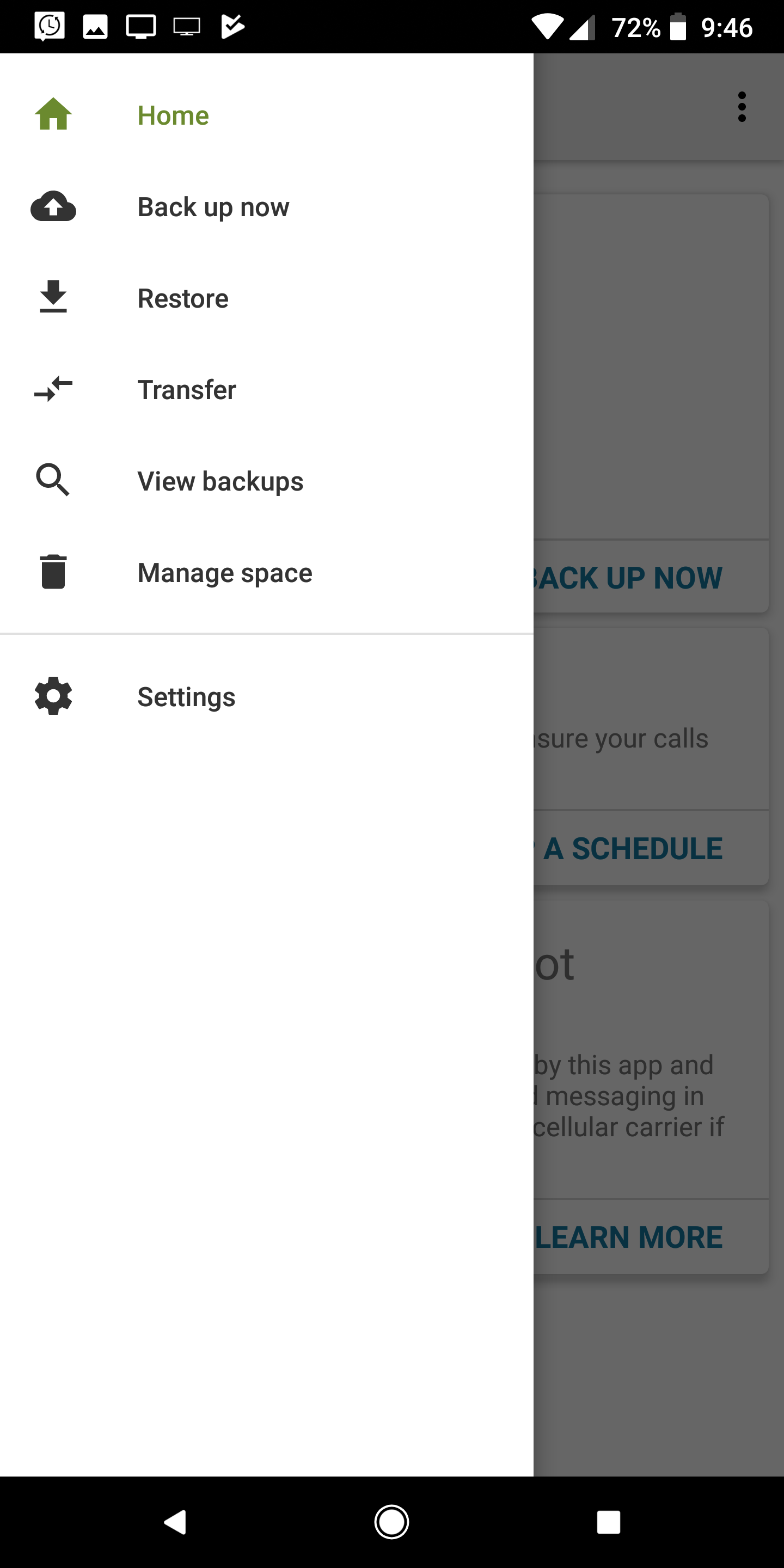
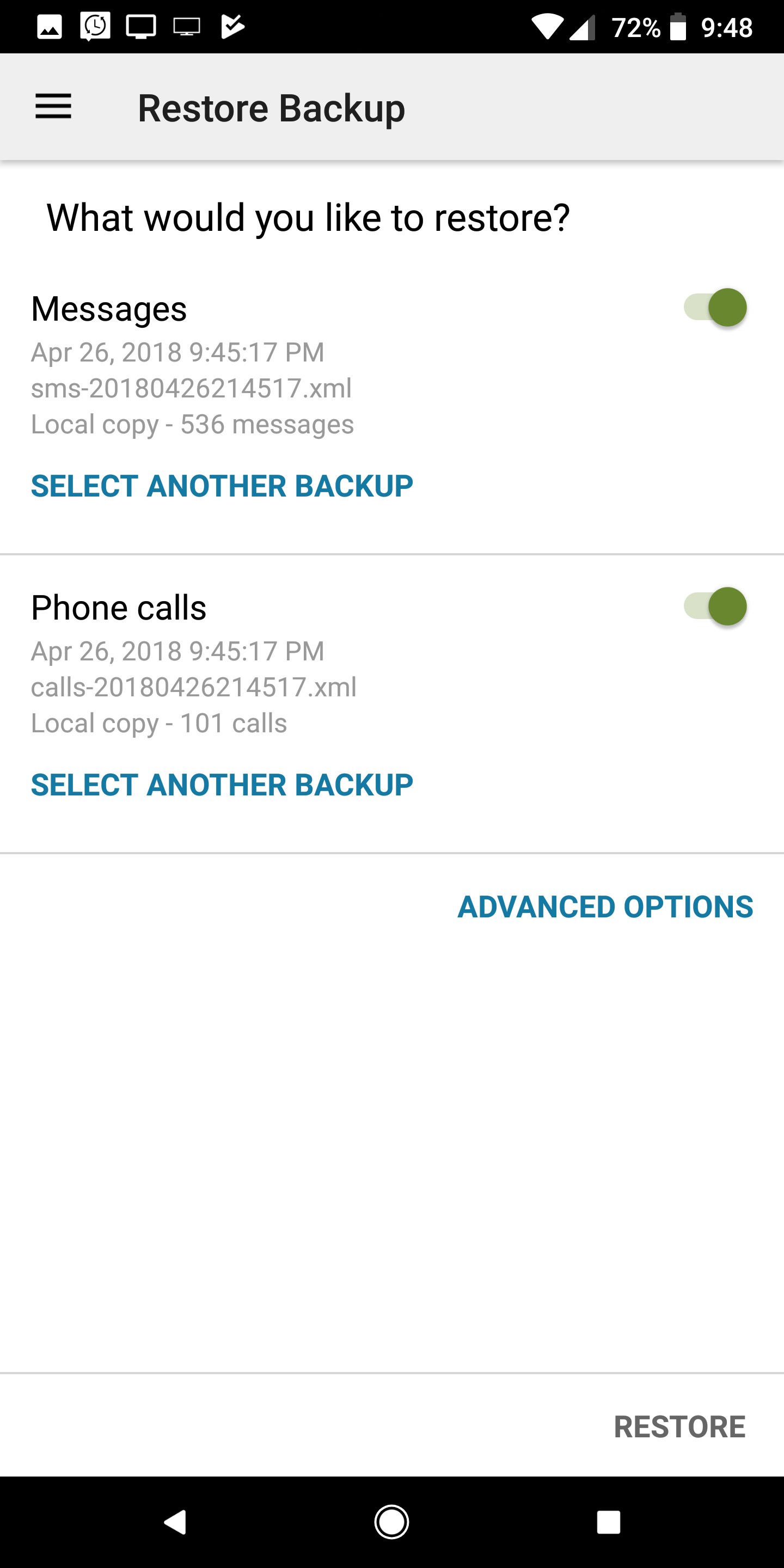
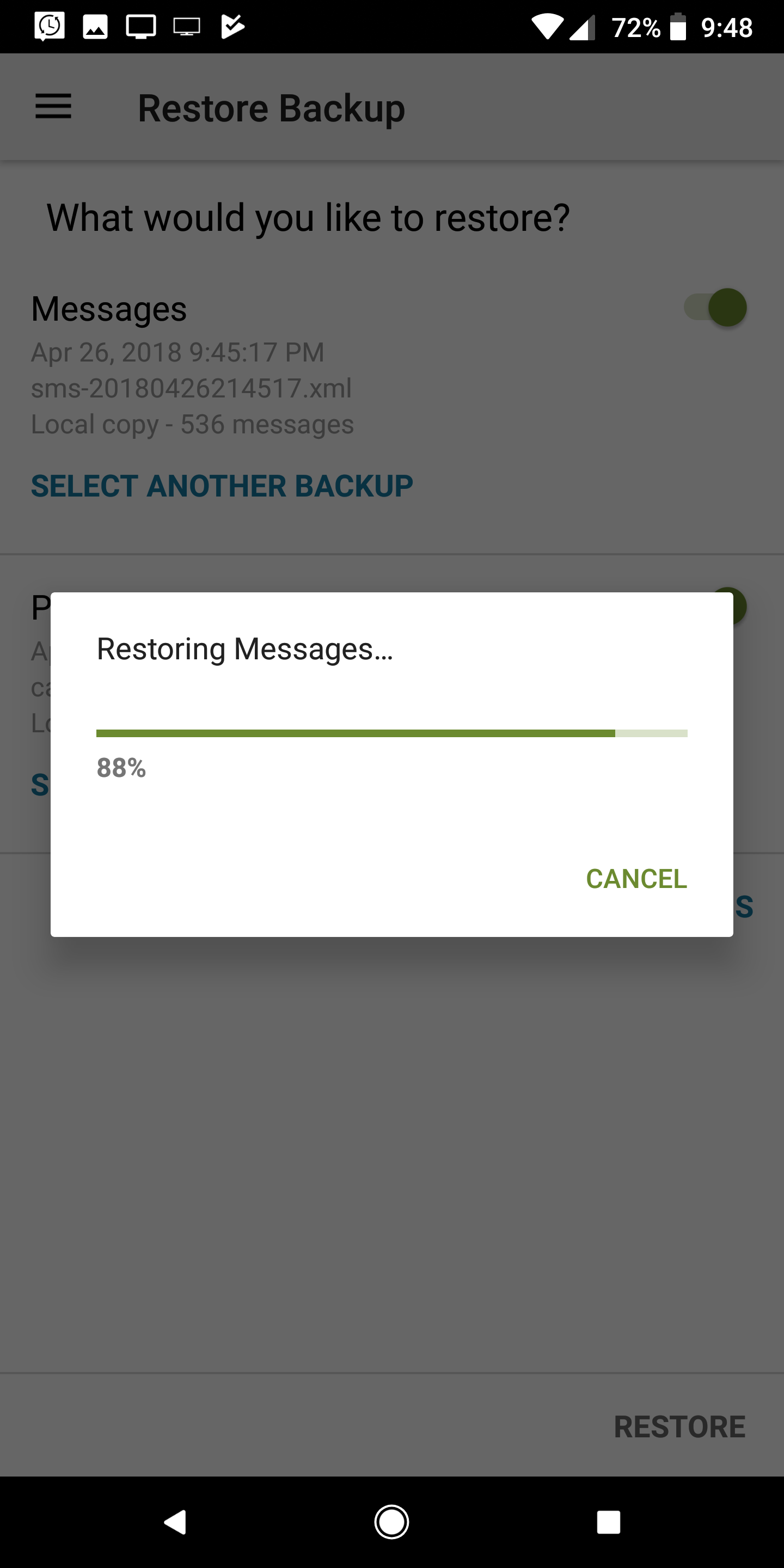
Restoration process in SMS Backup & Restore.
If you’d like to restore those backups on another device, swipe from the left edge in to pull up the navigation menu and select “Restore,” or you can use the “Transfer” option which sends files from app to app over Wi-Fi direct. If you’re performing a restore with a local file, make sure it has been copied to the device.
Whatever method you choose, the process to pull messages back down is easy, and the app is happy to walk you through locating the correct backup on internal or cloud storage.

SMS Backup & Restore does have a little more functionality than I’ve explicitly described here — like the ability to perform and maintain scheduled backups. But, personally, I find the advantages of Gmail storage, conversation view, and one-at-a-time backups in SMS Backup+ to be a better solution for that specific use case. With the larger backup sizes and no easy way to view them online, SMS Backup & Restore is more suited to one-time backups or migrations, in my opinion.




